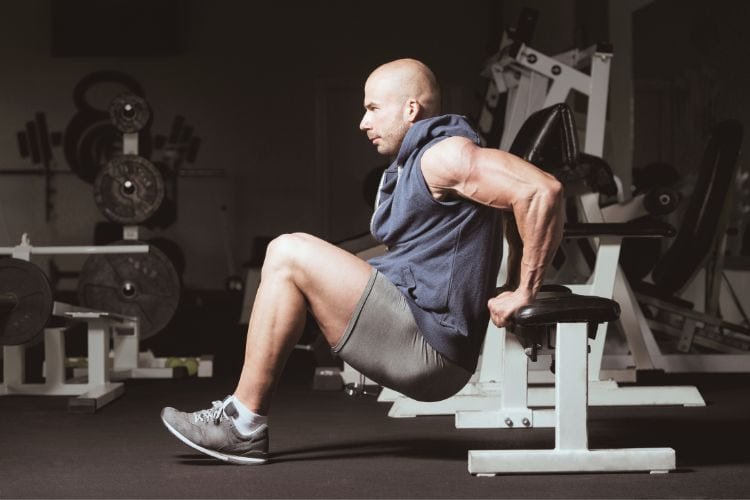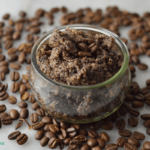
If you’re on a mission to build strong, sculpted arms, the triceps dips workout should be a staple in your routine. Triceps dips are a powerhouse movement for targeting the triceps—the muscles on the back of your upper arms. Whether you’re training at the gym, at home, or outdoors, dips can be customized to suit any fitness level. In this comprehensive guide, we’ll break down everything you need to know about triceps dips: the benefits, form tips, variations, and a complete workout plan.
What Are Triceps Dips?
Triceps dips are a bodyweight exercise that primarily targets the triceps brachii. It involves lowering and raising your body using your arms, usually on a bench, parallel bars, or dip station. Dips are categorized as a compound movement, meaning they also engage the shoulders, chest, and core to stabilize and assist the motion.
Muscle Groups Worked
- Primary: Triceps Brachii
- Secondary: Deltoids (shoulders), Pectoralis major (chest), Rhomboids and Trapezius (upper back), Core muscles
Benefits of Triceps Dips
1. Builds Arm Strength and Size
The triceps make up two-thirds of your upper arm, so working them effectively is key to achieving well-developed arms. Dips are one of the best ways to progressively overload the triceps using only body weight—or additional resistance when you’re ready.
2. Increases Upper Body Endurance
Because they target multiple muscles, triceps dips help improve overall upper body endurance. As you build up reps and resistance, you’ll find that your push-ups, bench presses, and overhead lifts also improve.
3. Minimal Equipment Needed
One of the greatest benefits of triceps dips is their versatility. You can perform them almost anywhere—with a bench, a chair, a set of bars, or even off the edge of a couch. No gym? No problem.
4. Improves Functional Strength
Dips mimic natural pushing motions that are useful in everyday activities like pushing open a door or lifting something overhead. This translates to better functional strength for daily life and sports.
How to Do a Basic Triceps Dip (Bench Version)
Step-by-Step Instructions
- Sit on a sturdy bench or chair with your hands placed next to your hips, fingers facing forward.
- Extend your legs forward, keeping a slight bend in the knees.
- Slide your hips forward off the bench, supporting your weight with your arms.
- Lower your body by bending the elbows to about a 90-degree angle.
- Push yourself back up by straightening your arms, squeezing your triceps at the top.
Key Form Tips
- Keep your elbows tucked in close to your body.
- Avoid dipping too low—this can strain the shoulders.
- Engage your core throughout the movement.
- Don’t let your hips sag; keep your body close to the bench.
Common Mistakes to Avoid
1. Flaring Elbows
Letting your elbows flare out to the sides reduces triceps activation and increases shoulder strain. Keep them pointed straight back throughout the movement.
2. Leaning Forward Too Much
Excess forward lean turns the dip into more of a chest exercise. To keep it focused on the triceps, maintain an upright torso.
3. Not Using Full Range of Motion
Lowering only slightly doesn’t fully activate the triceps. Aim for a 90-degree bend in the elbows without letting your shoulders drop excessively.
4. Using Momentum
Control is key. Jerking or bouncing through dips not only reduces effectiveness but can lead to injury.
Best Triceps Dips Variations
1. Chair or Bench Dips
Great for beginners. These dips use a static surface like a bench or chair and allow you to keep your feet on the floor, reducing the load.
2. Parallel Bar Dips
This is the standard gym dip. Performed on dip bars, it requires more upper body strength and core stability.
3. Weighted Dips
Once bodyweight dips become easy, you can add resistance by using a dip belt with weights, a dumbbell between the legs, or a weighted vest.
4. Resistance Band-Assisted Dips
Perfect for beginners who want to perform bar dips but need support. A band wrapped around the dip bars and under your knees helps reduce the load.
5. Single-Leg Bench Dips
To increase difficulty slightly without weights, lift one foot off the ground while performing bench dips.
Triceps Dips Workout Plan (Beginner to Advanced)
Whether you’re new or experienced, here’s how to incorporate triceps dips into your weekly workout routine.
Beginner Triceps Dip Routine (Home-Based)
Equipment: Bench or chair
Workout:
- Bench Dips – 3 sets of 10-12 reps
- Incline Push-Ups – 3 sets of 12 reps
- Overhead Dumbbell Triceps Extension – 3 sets of 10 reps
- Rest: 60–90 seconds between sets
Intermediate Routine (Gym-Based)
Equipment: Parallel bars or dip station
Workout:
- Parallel Bar Dips – 4 sets of 8-10 reps
- Triceps Pushdowns – 3 sets of 12 reps
- Dumbbell Skull Crushers – 3 sets of 10 reps
- Rest: 45–60 seconds
Advanced Routine (Strength-Focused)
Equipment: Dip bars + weight belt
Workout:
- Weighted Dips – 5 sets of 6-8 reps
- Close-Grip Bench Press – 4 sets of 8 reps
- Diamond Push-Ups – 3 sets to failure
- Rest: 60–90 seconds
How to Progress with Triceps Dips
Increase Reps Weekly
Start with 2–3 sets of 8–10 reps and add 1–2 reps each week. Once you hit 15+ reps with ease, it’s time to increase the challenge.
Add Weight Gradually
Using a dip belt or a dumbbell between your ankles can significantly boost your strength. Start with light weights and add resistance progressively.
Combine with Other Triceps Exercises
To fully develop the triceps, mix dips with skull crushers, triceps kickbacks, pushdowns, and overhead extensions.
Triceps Dips vs. Other Triceps Exercises
| Exercise | Equipment Needed | Difficulty | Muscle Focus |
|---|---|---|---|
| Triceps Dips | Bodyweight/bench | Moderate | Triceps, shoulders |
| Triceps Pushdown | Cable machine | Easy | Isolated triceps |
| Skull Crushers | EZ bar or dumbbells | Moderate | Long head of triceps |
| Overhead Extensions | Dumbbells/kettlebell | Moderate | All heads |
| Diamond Push-Ups | Bodyweight | Moderate | Triceps and chest |
Triceps dips are superior for compound strength building, while pushdowns and skull crushers are excellent isolation moves. A combination ensures full muscle development.
Who Should Do Triceps Dips?
Great For:
- Beginners using bench dips for bodyweight control
- Intermediate to advanced lifters aiming for arm size
- Athletes improving upper body pushing strength
- People training at home or outdoors
Who Should Modify:
If you have shoulder injuries or lack flexibility, dips may aggravate the joint. In such cases, start with pushdowns or kickbacks and gradually improve shoulder stability.
FAQs About Triceps Dips
How Often Should I Do Triceps Dips?
2–3 times per week is ideal for triceps growth. Ensure at least 48 hours of rest between triceps-focused sessions.
Are Dips Better Than Push-Ups for Triceps?
Dips place a greater load on the triceps compared to regular push-ups, making them more effective for triceps hypertrophy. However, diamond push-ups are a great alternative.
Can I Do Dips Every Day?
Not recommended. Like any strength exercise, your muscles need time to recover. Doing dips daily can lead to overtraining and injury.
Add Triceps Dips to Your Routine Today
Triceps dips are a must-have move in your upper body workout arsenal. They’re effective, accessible, and scalable for all levels of fitness. Whether you’re building arm strength, toning up, or trying to push past a plateau, dips can help you get there faster.
Combine dips with a well-rounded triceps routine, progressive overload, and proper form, and you’ll see impressive changes in strength and muscle tone. Keep challenging yourself, stay consistent, and make triceps dips a regular part of your fitness journey.


